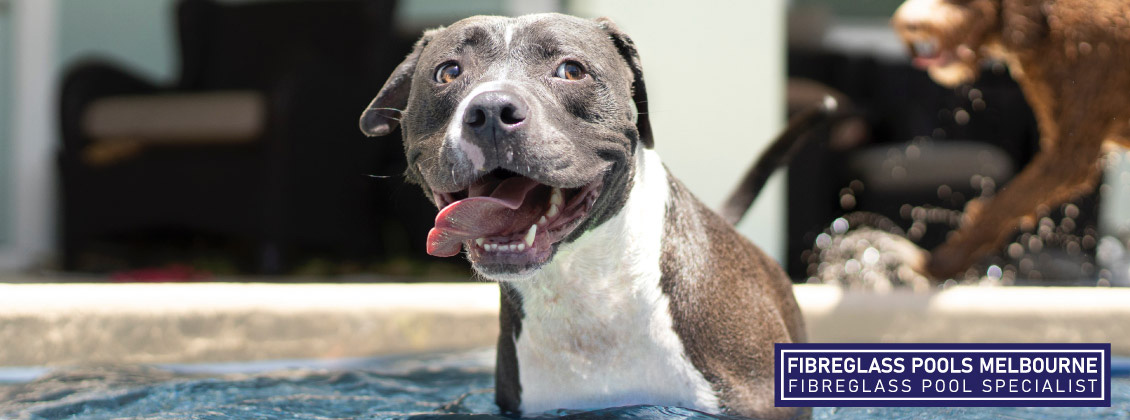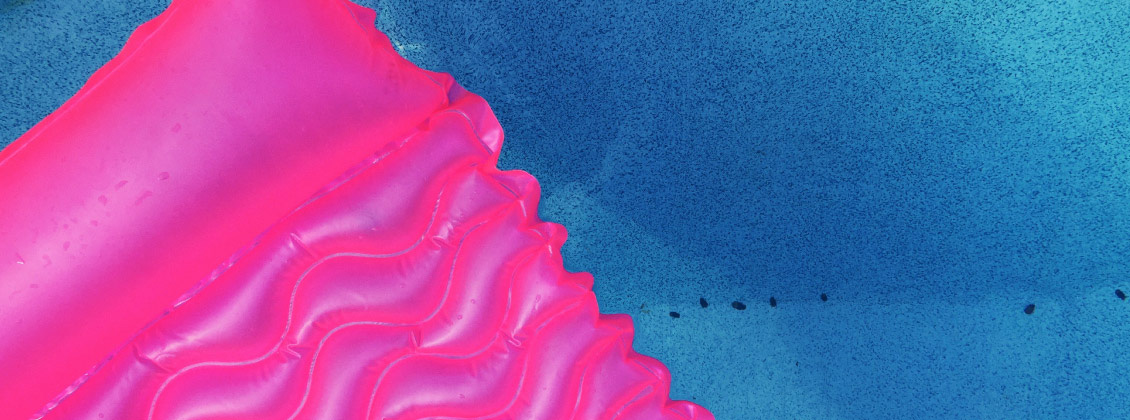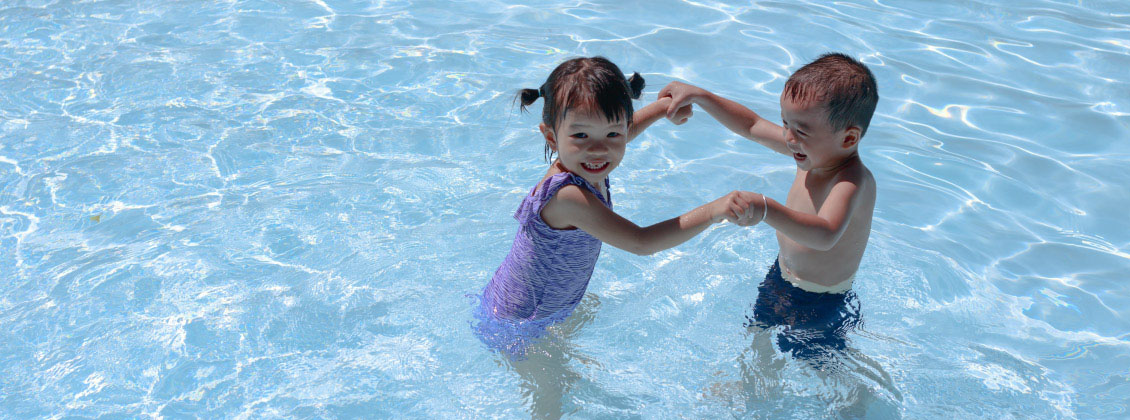Swimming Pool Management - What It All Entails
Anyone who owns a fibreglass pool knows that it needs to be regularly maintained. When you have a strong understanding of how you can maintain the water in your pool, then you'll be more effective at it. You'll know how to create a pool maintenance routine, as well as what you should do to regularly maintain it.

How do you keep your pool clean?
There are four essential parts that you’ll need to manage, in your fibreglass pool. You should have a general understanding of what these parts are, as well as what functions they have. When these parts are running smoothly, then you won’t have any problems using your pool. Even if you do encounter pool-related issues, they’ll be easier to resolve.
So, what are these four parts?
Pool water
If you want to safely use your fibreglass pool, then you’ll need to ensure that the pool water in it is healthy. When the pool water is kept clean, then your family and friends are protected against pollutants and contaminants. You can also avoid hardware repairs, as a result of corrosion or the build-up of minerals.
The interior
In addition to maintaining the water in your pool, you’ll also need to keep the pool liner clean. The pool liner is in contact with the pool water constantly. These surfaces should be kept clean, and free of mould and algae. You’ll need to brush down your pool liners from time to time.
The filtration system
The pool pump is responsible for drawing in water from your pool. The pool filter then removes dirt, debris, and other foreign contaminants from the water. This helps you keep your pool safe. Without a proper pool filtration system, the water in your fibreglass pool can turn cloudy or look polluted.
In addition to this, your pool may also use pool filters like sand filters, diatomaceous earth filters, or cartridge filters. These will need to be cleaned as well. Should you have a saltwater pool, then you’ll have a saltwater chlorinator instead of the aforementioned pool filters.
Pool skimmers
Your pool will have skimmers and returns, which draw water into your filter, so it can be cleaned. Then the water is released back into the pool, once it’s cleaned. The skimmers draw in the water and the pool returns return the water. To work effectively, these should be free of any kind of obstructions.

Building an effective pool maintenance routine
There are three core areas that you need to focus on when keeping your pool clean.
Water circulation
The water in your fibreglass pool should be kept moving. That way, the pool water stays clean, as well as safe for use. Pools that have a good circulation system are less likely to encounter issues related to pool algae growth or deal with the pool water turning cloudy. This is why you need to ensure that both the filtration system and the pool pump are being run every day.
Ideally, you should keep your pool water circulating all the time. However, this isn’t always economically feasible. Instead, consider running your pool filter for at least twelve hours every day. This will ensure that the water is circulated a few times, which can, in turn, keep the water in the pool clean.
You should also regularly backwash your pool filter, to ensure good circulation. When you backwash your pool filter, then the flow of the water is reversed, as it goes through the filter. As a result, the dirty water and the buildup of any contaminants are taken to the pool’s waste port.
Creating your schedule
There are some supplies that you’ll need to purchase, in order to keep the water in the pool clean. These include:
- Pool brush
- Net skimmer
- Pool vacuum
You could find everything from leaves to even dirt, entering your pool. Residues left behind from hair products people used before entering the pool water, perfumes, and even lotions will need to be cleaned out as well. If they aren’t, then this increases the risks associated with bacterial contamination.
You’ll need to skim the water in your pool, brush the sides of the pool, as well as the floor, or vacuum the pool, on a weekly basis. If you’re wondering what you can use as a scouring cleaner, then using a paste made of baking soda can be a great option. You can also invest in a robotic pool cleaner, which greatly reduces the amount of time you’ll need to spend cleaning your pool.
There are also a few tips you can use, to keep your pool water clean. Tennis balls, when added to your pool directly, or into the skimmer basket, can effectively absorb any surface oils. They can get rid of traces of sunscreen, lotions, cosmetics, and more.

Balancing the water chemistry
Balancing the water chemistry of your pool can sound intimidating, but it’s actually not that difficult. The first thing you’ll need to do is test the quality of the water in your fibreglass pool. To do this, you’ll need to purchase a testing kit for pool water from your local pool supply store. There are three key areas that you’ll be looking at when it comes to balancing the water in your swimming pool. These include:
- pH levels: This shows how basic or acidic the water in your pool is. When the levels are high, then it shows that the water is more basic. When the levels are low, then this indicates that the water is basic. Ideally, the pH level of your pool should be between 7.4 and 7.6.
- Alkalinity: This is a buffer for the pH, and helps ensure that the water in the pool doesn’t become too basic or acidic. You should maintain the alkalinity of your pool around 100 to 150 ppm. If you need to increase the alkalinity level of your pool, then you can add baking soda to the pool water.
- Sanitiser: The levels of sanitisers like chlorine or bromine etc., in the pool, will need to be maintained.
When you know what the pH level, the alkalinity and the sanitiser level of your pool water are, then you can add chemicals to the pool water to tweak its chemistry.
Conclusion
Maintaining the water in your fibreglass pool is a lot easier than it sounds. As long as you ensure that you’re regularly following your pool maintenance schedule, then the water in your pool will continue to be clean. You can also get automated pool cleaning equipment, like robotic pool cleaners, to alleviate some of the pool cleaning load off your back.
Swimming Pool Management - What It All Entails
Anyone who owns a fibreglass pool knows that it needs to be regularly maintained. When you have a strong understanding of how you can maintain the water in your pool, then you'll be more effective at it. You'll know how to create a pool maintenance routine, as well as what you should do to regularly maintain it.

How do you keep your pool clean?
There are four essential parts that you’ll need to manage, in your fibreglass pool. You should have a general understanding of what these parts are, as well as what functions they have. When these parts are running smoothly, then you won’t have any problems using your pool. Even if you do encounter pool-related issues, they’ll be easier to resolve.
So, what are these four parts?
Pool water
If you want to safely use your fibreglass pool, then you’ll need to ensure that the pool water in it is healthy. When the pool water is kept clean, then your family and friends are protected against pollutants and contaminants. You can also avoid hardware repairs, as a result of corrosion or the build-up of minerals.
The interior
In addition to maintaining the water in your pool, you’ll also need to keep the pool liner clean. The pool liner is in contact with the pool water constantly. These surfaces should be kept clean, and free of mould and algae. You’ll need to brush down your pool liners from time to time.
The filtration system
The pool pump is responsible for drawing in water from your pool. The pool filter then removes dirt, debris, and other foreign contaminants from the water. This helps you keep your pool safe. Without a proper pool filtration system, the water in your fibreglass pool can turn cloudy or look polluted.
In addition to this, your pool may also use pool filters like sand filters, diatomaceous earth filters, or cartridge filters. These will need to be cleaned as well. Should you have a saltwater pool, then you’ll have a saltwater chlorinator instead of the aforementioned pool filters.
Pool skimmers
Your pool will have skimmers and returns, which draw water into your filter, so it can be cleaned. Then the water is released back into the pool, once it’s cleaned. The skimmers draw in the water and the pool returns return the water. To work effectively, these should be free of any kind of obstructions.

Building an effective pool maintenance routine
There are three core areas that you need to focus on when keeping your pool clean.
Water circulation
The water in your fibreglass pool should be kept moving. That way, the pool water stays clean, as well as safe for use. Pools that have a good circulation system are less likely to encounter issues related to pool algae growth or deal with the pool water turning cloudy. This is why you need to ensure that both the filtration system and the pool pump are being run every day.
Ideally, you should keep your pool water circulating all the time. However, this isn’t always economically feasible. Instead, consider running your pool filter for at least twelve hours every day. This will ensure that the water is circulated a few times, which can, in turn, keep the water in the pool clean.
You should also regularly backwash your pool filter, to ensure good circulation. When you backwash your pool filter, then the flow of the water is reversed, as it goes through the filter. As a result, the dirty water and the buildup of any contaminants are taken to the pool’s waste port.
Creating your schedule
There are some supplies that you’ll need to purchase, in order to keep the water in the pool clean. These include:
- Pool brush
- Net skimmer
- Pool vacuum
You could find everything from leaves to even dirt, entering your pool. Residues left behind from hair products people used before entering the pool water, perfumes, and even lotions will need to be cleaned out as well. If they aren’t, then this increases the risks associated with bacterial contamination.
You’ll need to skim the water in your pool, brush the sides of the pool, as well as the floor, or vacuum the pool, on a weekly basis. If you’re wondering what you can use as a scouring cleaner, then using a paste made of baking soda can be a great option. You can also invest in a robotic pool cleaner, which greatly reduces the amount of time you’ll need to spend cleaning your pool.
There are also a few tips you can use, to keep your pool water clean. Tennis balls, when added to your pool directly, or into the skimmer basket, can effectively absorb any surface oils. They can get rid of traces of sunscreen, lotions, cosmetics, and more.

Balancing the water chemistry
Balancing the water chemistry of your pool can sound intimidating, but it’s actually not that difficult. The first thing you’ll need to do is test the quality of the water in your fibreglass pool. To do this, you’ll need to purchase a testing kit for pool water from your local pool supply store. There are three key areas that you’ll be looking at when it comes to balancing the water in your swimming pool. These include:
- pH levels: This shows how basic or acidic the water in your pool is. When the levels are high, then it shows that the water is more basic. When the levels are low, then this indicates that the water is basic. Ideally, the pH level of your pool should be between 7.4 and 7.6.
- Alkalinity: This is a buffer for the pH, and helps ensure that the water in the pool doesn’t become too basic or acidic. You should maintain the alkalinity of your pool around 100 to 150 ppm. If you need to increase the alkalinity level of your pool, then you can add baking soda to the pool water.
- Sanitiser: The levels of sanitisers like chlorine or bromine etc., in the pool, will need to be maintained.
When you know what the pH level, the alkalinity and the sanitiser level of your pool water are, then you can add chemicals to the pool water to tweak its chemistry.
Conclusion
Maintaining the water in your fibreglass pool is a lot easier than it sounds. As long as you ensure that you’re regularly following your pool maintenance schedule, then the water in your pool will continue to be clean. You can also get automated pool cleaning equipment, like robotic pool cleaners, to alleviate some of the pool cleaning load off your back.


